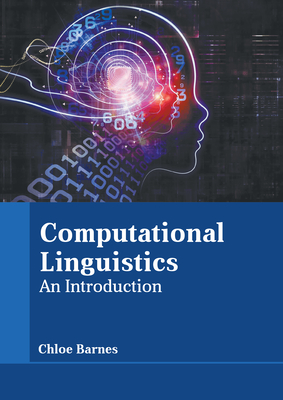可解释的自然语言处理
IF 5.3
2区 计算机科学
Q2 COMPUTER SCIENCE, ARTIFICIAL INTELLIGENCE
引用次数: 6
摘要
可解释自然语言处理(NLP)是一个新兴的领域,近年来受到了NLP界的极大关注。其核心是需要解释机器学习模型的预测,机器学习模型现在更频繁地部署和使用在医疗保健和法律等敏感领域。可解释NLP领域的快速发展导致了在这些领域工作的研究小组有些脱节。这种脱节导致研究人员对类似问题采用了不同的定义,同时在某些情况下也允许重新创建以前的研究,这突出了对可解释的NLP的统一框架的必要性。这本书由Anders Søgaard撰写,提供了作者令人信服的观点,即我们应该如何首先定义解释,其次,我们应该如何对解释进行分类以及产生解释的方法,首先为可解释的NLP创建了一个分类法和统一框架。根据作者的说法,这将使该领域的研究和解释方法更容易联系起来,目的是加快研究。对于两位开始探索可解释NLP的研究人员来说,这本书都是一本精彩的书,对于在这一领域有经验的研究人员也是如此,因为它在地方和全球层面上提供了可解释的NLP的全面最新观点。作者方便而合乎逻辑地将每一章都作为可解释的NLP的“问题”来呈现,因此还提供了可解释NLP问题领域的分类法和当前解决这些问题的方法。在每一章中,都详细描述了解释方法,从最初的“基础”方法(如香草梯度)开始,到更复杂的方法(如综合梯度)。为了补充这一理论,并使其成为可解释NLP的完整指南,作者还描述了评估方法,并提供了数据集和代码库列表。因此,尽管这本书需要一些NLP和机器学习的基本知识才能入门,但它仍然可以被大量读者阅读。这本书共分为十三章。在第一章中,作者介绍了与先前提出的可解释NLP分类法相关的问题。第2章介绍了NLP中常用的机器学习体系结构,同时也介绍了书中提出的解释分类法。章节本文章由计算机程序翻译,如有差异,请以英文原文为准。
Explainable Natural Language Processing
Explainable Natural Language Processing (NLP) is an emerging field, which has received significant attention from the NLP community in the last few years. At its core is the need to explain the predictions of machine learning models, now more frequently deployed and used in sensitive areas such as healthcare and law. The rapid developments in the area of explainable NLP have led to somewhat disconnected groups of studies working on these areas. This disconnect results in researchers adopting various definitions for similar problems, while also in certain cases enabling the re-creation of previous research, highlighting the need for a unified framework for explainable NLP. Written by Anders Søgaard, this book provides the author’s convincing view of how we should first define explanations, and, secondly, how we should categorize explanations and the approaches that generate them, creating first and foremost a taxonomy and a unified framework for explainable NLP. As per the author, this will make it easier to relate studies and explanation methodologies in this field, with the aim of accelerating research. It is a brilliant book for both researchers starting to explore explainable NLP, but also for researchers with experience in this area, as it provides a holistic up-to-date view of the explainable NLP at the local and global level. The author conveniently and logically presents each chapter as a “problem” of explainable NLP, as such providing also a taxonomy of explainable NLP problem areas and current approaches to tackle them. Under each chapter, explanation methods are described in detail, beginning initially with “foundational” approaches (e.g., vanilla gradients) and building toward more complex ones (e.g., integrated gradients). To complement the theory and make this into a complete guide to explainable NLP, the author also describes evaluation approaches and provides a list of datasets and code repositories. As such, although the book requires some basic knowledge of NLP and Machine Learning to get started, it is nevertheless accessible to a large audience. This book is organized into thirteen chapters. In the first chapter the author introduces the problems associated with previously proposed taxonomies for explainable NLP. Chapter 2 follows by introducing popular machine learning architectures used in NLP, while also introducing the explanation taxonomy proposed in the book. Chapters
求助全文
通过发布文献求助,成功后即可免费获取论文全文。
去求助
来源期刊

Computational Linguistics
工程技术-计算机:跨学科应用
CiteScore
15.80
自引率
0.00%
发文量
45
审稿时长
>12 weeks
期刊介绍:
Computational Linguistics, the longest-running publication dedicated solely to the computational and mathematical aspects of language and the design of natural language processing systems, provides university and industry linguists, computational linguists, AI and machine learning researchers, cognitive scientists, speech specialists, and philosophers with the latest insights into the computational aspects of language research.
 求助内容:
求助内容: 应助结果提醒方式:
应助结果提醒方式:


